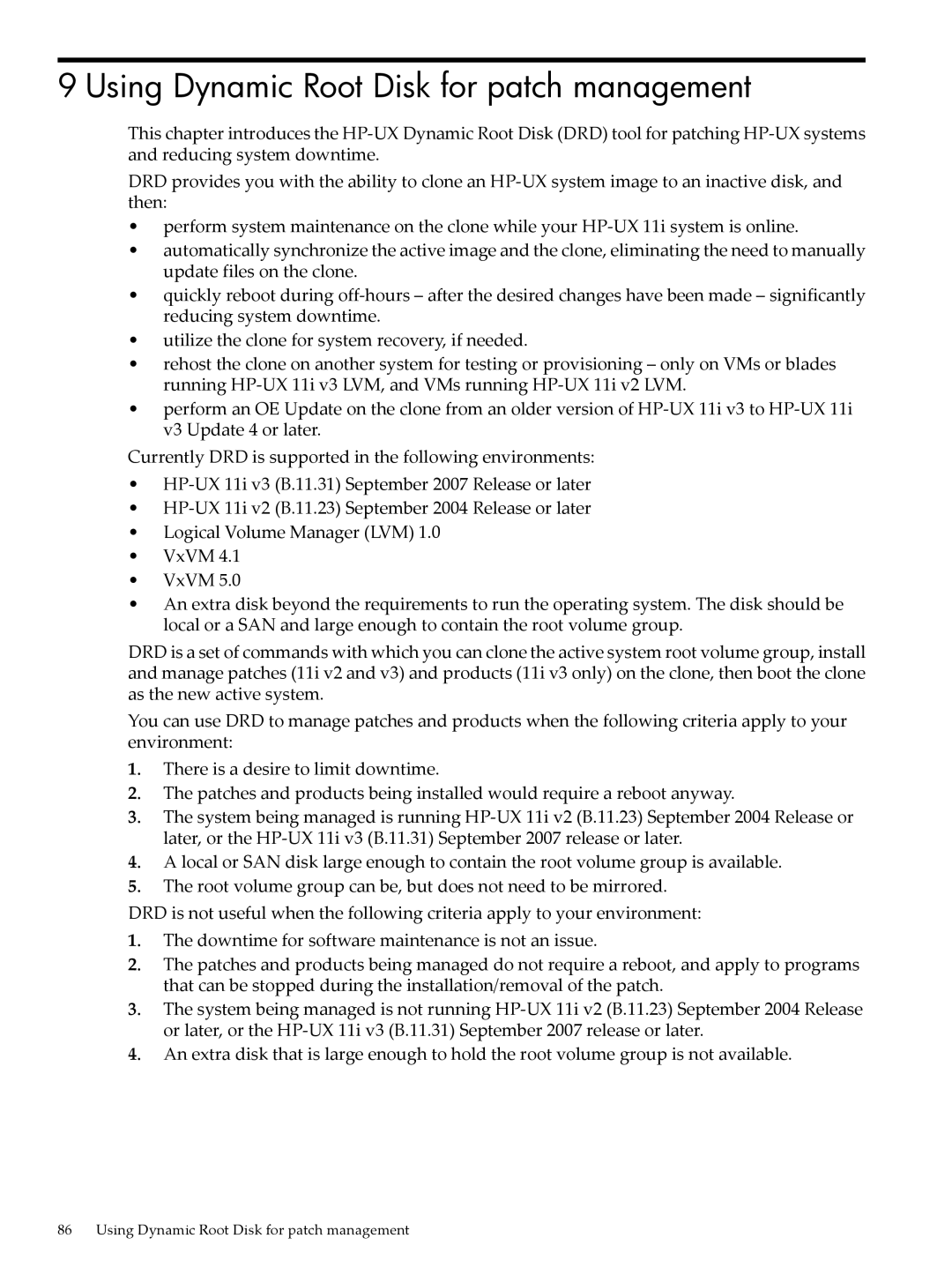9 Using Dynamic Root Disk for patch management
This chapter introduces the
DRD provides you with the ability to clone an
•perform system maintenance on the clone while your
•automatically synchronize the active image and the clone, eliminating the need to manually update files on the clone.
•quickly reboot during
•utilize the clone for system recovery, if needed.
•rehost the clone on another system for testing or provisioning – only on VMs or blades running
•perform an OE Update on the clone from an older version of
Currently DRD is supported in the following environments:
•
•
•Logical Volume Manager (LVM) 1.0
•VxVM 4.1
•VxVM 5.0
•An extra disk beyond the requirements to run the operating system. The disk should be local or a SAN and large enough to contain the root volume group.
DRD is a set of commands with which you can clone the active system root volume group, install and manage patches (11i v2 and v3) and products (11i v3 only) on the clone, then boot the clone as the new active system.
You can use DRD to manage patches and products when the following criteria apply to your environment:
1.There is a desire to limit downtime.
2.The patches and products being installed would require a reboot anyway.
3.The system being managed is running
4.A local or SAN disk large enough to contain the root volume group is available.
5.The root volume group can be, but does not need to be mirrored.
DRD is not useful when the following criteria apply to your environment:
1.The downtime for software maintenance is not an issue.
2.The patches and products being managed do not require a reboot, and apply to programs that can be stopped during the installation/removal of the patch.
3.The system being managed is not running
4.An extra disk that is large enough to hold the root volume group is not available.
86 Using Dynamic Root Disk for patch management
